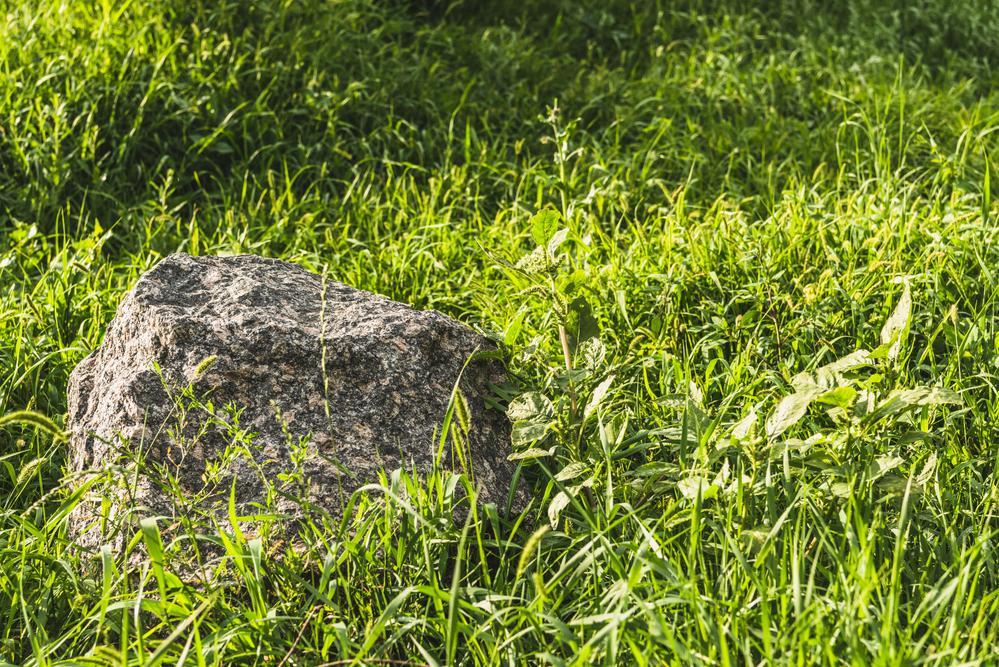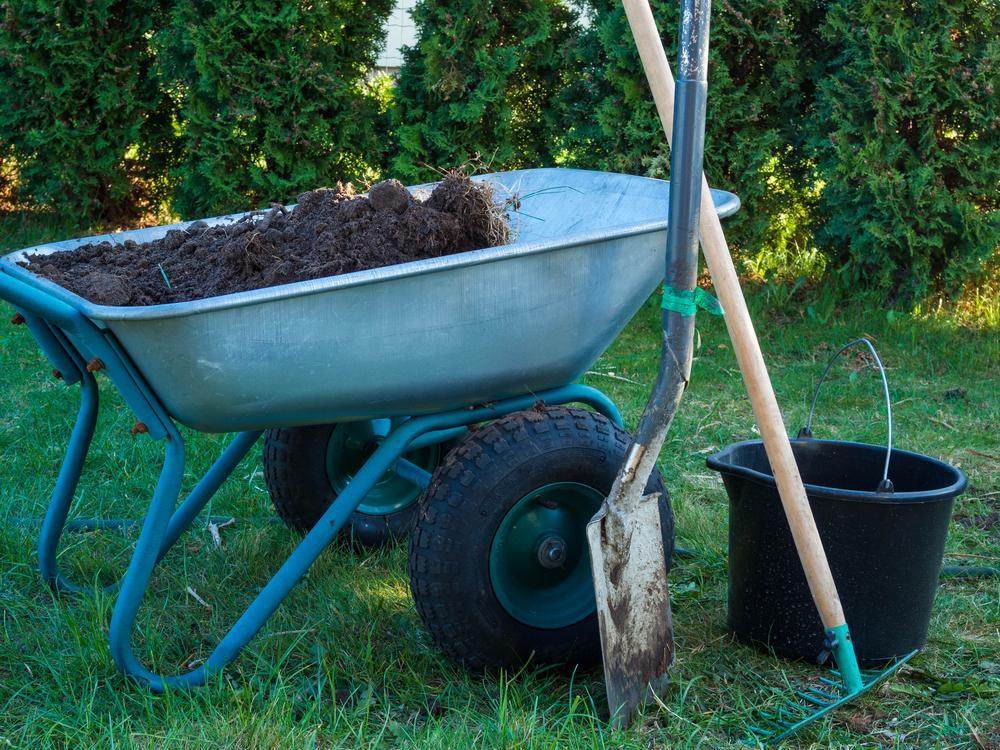A backyard lawn refers to a landscaped area in the backyard of a home, typically covered with grass or other ground-cover plants. A backyard lawn can serve a variety of purposes, such as providing a space for outdoor activities and recreation, enhancing the aesthetic appeal of the property, and promoting environmental sustainability.

A well-maintained backyard lawn can also increase the value of a home and provide a natural habitat for wildlife. Creating and maintaining a backyard lawn can involve tasks such as mowing, watering, fertilizing, and controlling weeds and pests. With proper care and attention, a backyard lawn can be a beautiful and enjoyable feature of any home.
Creating a beautiful and stunning lawn is also affected by the type of grass that you choose. There are a lot of grass types that will grow better based on the weather or climate in a certain area. It’s because the weather will also affect the quality of the air and soil.
(You may like: How to Make a Wood Beam with 2×8 Boards)
We have prepared a few examples of grass types that you can use as a reference before deciding on using a certain grass to get a beautiful backyard.
How to Create a Stunning Lawn with the Right Grass
Weather and Climate Affect

It is important to choose the appropriate type of grass for your climate in order to ensure successful growth and a healthy lawn. Choosing the appropriate type of grass for your climate is crucial for several reasons:
- Optimal growth and health: Different types of grass are adapted to different climates and weather conditions. Choosing the appropriate type of grass for your climate ensures that your lawn will receive the necessary nutrients, water, and sunlight it needs to grow and remain healthy.
- Water conservation: Certain grasses require less water than others and are better suited for dry or drought-prone climates. By selecting a drought-resistant grass variety, you can conserve water and reduce your water bill.
- Environmental sustainability: Choosing grass that is well-suited to your climate can help reduce the need for fertilizers, pesticides, and other chemicals that can harm the environment.
- Aesthetics: A lawn that is well-suited to your climate is more likely to remain lush and green, enhancing the aesthetic appeal of your home.
- Cost-effective: By selecting the appropriate type of grass for your climate, you can avoid the cost and time-consuming effort of trying to maintain a lawn that is not well-suited to your environment.
Additionally, factors such as soil type, sun exposure, and water availability should also be taken into consideration when selecting a type of grass for your lawn. Consulting with a local expert or landscaping professional can help you make the best choice for your specific climate and conditions.
(You may like: How to Estimate the Number of Concrete Bags Needed for a Project)
Other Factors to Note

Here’s a more detailed explanation about soil type, sun exposure, and water availability, and how they affect the choice of grass for your lawn:
- Soil Type: The type of soil in your backyard is a crucial factor in determining which grass species will thrive in your lawn. Soil can be classified as sandy, loamy, or clay, and each type of soil has different properties that affect the growth of grass. For example, sandy soil drains water quickly and may not retain enough nutrients for some grass species, while clay soil can hold too much water and may be prone to compaction. Matching the grass species to the soil type can help ensure successful growth and minimize the need for additional inputs like fertilizers and water.
- Sun Exposure: The amount of sun exposure in your backyard is another important factor to consider when choosing grass species. Some grasses require full sun, while others can tolerate partial shade. If your backyard has areas that are shaded by trees or buildings, it’s important to choose a grass species that can still grow in those conditions.
- Water Availability: The amount of water available to your lawn can also impact which grass species you choose. If you live in an area with frequent rainfall or have access to irrigation, you may be able to choose a grass species that require more water. However, if you live in a dry region or want to conserve water, selecting a drought-resistant grass species may be a better choice.
By taking into consideration factors such as soil type, sun exposure, and water availability, you can select a grass species that is best suited to your backyard environment. This can help you maintain a healthy and beautiful lawn with minimal effort and input.
(You may like: 15 Household Areas That Need Regular Maintenance)
Warm-Season Grasses
Warm-season grasses are a type of grass that is adapted to warm and humid climates. These grasses typically thrive in regions with hot summers and mild winters. Some common warm-season grasses include Bermuda grass, Zoysia grass, and St. Augustine grass.
Here are some general characteristics of warm-season grasses:
- Growth Habits: Warm-season grasses are typically more aggressive and have a higher growth rate during the summer months, which is when they are actively growing. They also have a dormancy period in the winter months, during which they go dormant and turn brown.
- Drought Tolerance: Many warm-season types of grass have good drought tolerance and are able to survive in hot and dry conditions. They are able to store water in their deep root systems, which allows them to withstand periods of drought without suffering damage.
- Heat Tolerance: Warm-season grasses are able to thrive in hot and humid conditions, and are able to tolerate higher temperatures than cool-season grasses. They are also generally more disease-resistant in hot and humid conditions.
- Maintenance: Warm-season grasses require less maintenance than cool-season grasses. They typically require less water, fertilizer, and mowing than cool-season grasses. However, they may require more frequent mowing during periods of active growth in the summer months.
There are several types of warm-season grasses that are well-suited to warm and humid climates. Here are some of the most popular warm-season grass species:
- Bermuda grass: Bermuda grass is a popular warm-season grass that is commonly used in southern regions of the United States. It has a high tolerance for heat, drought, and foot traffic, and can thrive in full sun or partial shade. Bermuda grass has a fine texture and a deep green color, making it an attractive choice for many homeowners.
- Zoysia grass: Zoysia grass is another popular warm-season grass that is well-suited to hot and humid climates. It has a deep root system that allows it to tolerate drought and recover quickly from damage. Zoysia grass has a medium to fine texture and a dark green color and is able to grow in both full sun and partial shade.
- St. Augustine grass: St. Augustine grass is a warm-season grass that is commonly used in coastal areas of the southern United States. It has a good tolerance for heat, humidity, and salt spray, making it well-suited to coastal regions. St. Augustine grass has a coarse texture and a blue-green color and can grow in both full sun and partial shade.
- Centipede grass: Centipede grass is a low-maintenance warm-season grass that is well-suited to hot and humid climates. It has a low growth rate and requires less mowing and fertilization than other warm-season grasses. Centipede grass has a fine texture and a light green color and is able to grow in full sun or partial shade.
(You may like: How to Increase Kitchen Counter Height)
Cool-Season Grasses
Cool-season grasses are a type of grass that is adapted to cooler climates with mild summers and cold winters. These grasses typically thrive in regions with temperatures ranging from 60 to 75 degrees Fahrenheit. Some common cool-season grasses include Kentucky bluegrass, tall fescue, and perennial ryegrass.
Here are some general characteristics of cool-season grasses:
- Growth Habits: Cool-season grasses have a higher growth rate during the cooler months of spring and fall, and generally slower growth during the summer months. They also remain green and actively growing during the winter months in regions with mild winters.
- Shade Tolerance: Many cool-season types of grass have good shade tolerance and are able to grow in areas with partial shade or dappled sunlight. This makes them a good choice for lawns with trees or buildings that block some of the sunlight.
- Maintenance: Cool-season grasses require more maintenance than warm-season grasses. They typically require more water, fertilizer, and mowing than warm-season grasses. However, they may require less frequent mowing during the slower growth periods in the summer months.
- Heat Tolerance: Cool-season grasses are not as heat-tolerant as warm-season grasses and may suffer damage in hot and dry conditions. However, some cool-season grasses like tall fescue have better heat tolerance than others.
Overall, cool-season grasses are a great choice for homeowners in regions with cooler climates. They are able to remain green and actively grow during the winter months and have good shade tolerance. However, they require more maintenance than warm-season grasses and may not be as heat-tolerant. Choosing the appropriate cool-season grass species for your region can help ensure a healthy and beautiful lawn.
Here are some of the most popular cool-season grass species:
- Kentucky Bluegrass: Kentucky bluegrass is a popular cool-season grass that is known for its fine texture and rich green color. It is often used in lawns, parks, and golf courses due to its ability to grow in full sun and tolerate some shade. Kentucky bluegrass requires regular watering and fertilization to maintain its appearance.
- Fine Fescue: A fine fescue is a group of grasses that includes creeping red fescue, chewings fescue, hard fescue, and sheep fescue. These grasses are known for their fine texture and shade tolerance. They require less watering and fertilization than Kentucky bluegrass, making them a popular choice for low-maintenance lawns.
- Perennial Ryegrass: Perennial ryegrass is a cool-season grass that is known for its fast germination and ability to grow in a wide range of soil types. It has a dark green color and a fine texture. Perennial ryegrass is often used for overseeding warm-season grasses in the fall to maintain a green lawn throughout the winter.
- Tall Fescue: Tall fescue is a cool-season grass that is known for its deep root system and ability to tolerate drought and foot traffic. It has a coarser texture than Kentucky bluegrass and perennial ryegrass. Tall fescue is often used in high-traffic areas such as sports fields and parks.
(You may like: How to Check if Glass is Oven-Safe with These 12 Steps)
Selecting the appropriate type of grass for your climate is essential to ensure a healthy and thriving lawn. Warm-season grasses are best suited for hot and dry climates, while cool-season grasses are better adapted to cooler climates.
Cool-season grasses have a higher growth rate in the cooler months of spring and fall, and require more maintenance than warm-season grasses. Popular cool-season grass species include Kentucky bluegrass, fine fescue, perennial ryegrass, and tall fescue.
When selecting a grass species, it’s important to consider factors such as soil type, sun exposure, and water availability to ensure the grass will thrive in your specific environment.





